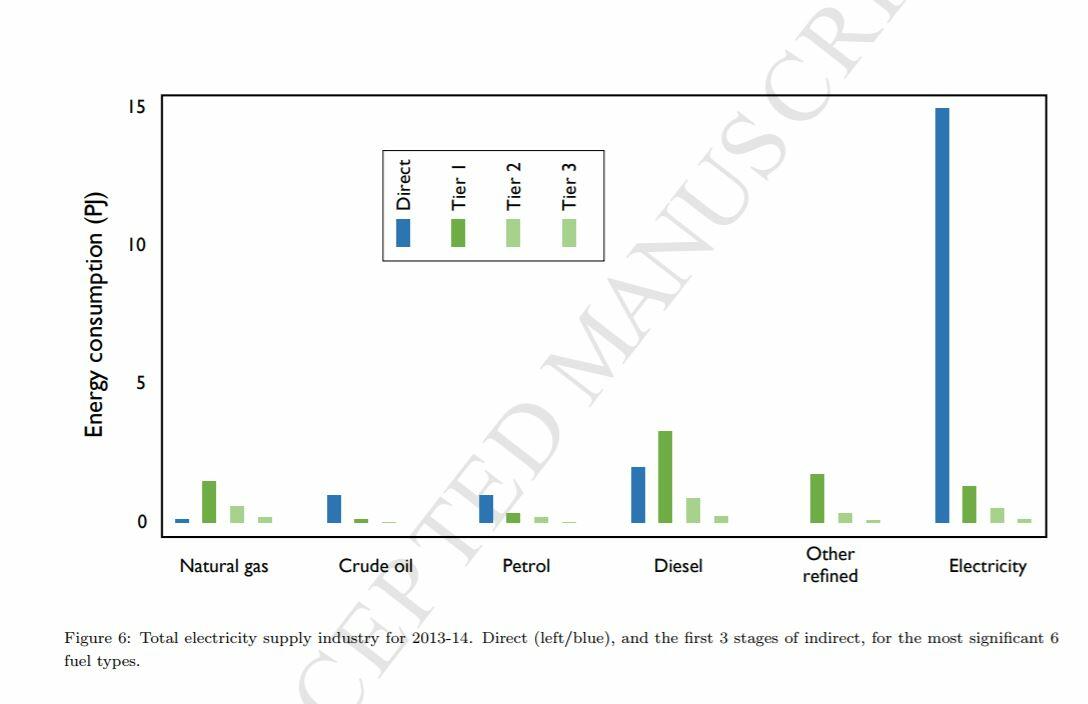An input-output based net-energy assessment of an electricity supply industry

Author: Graham Palmer
Abstract: Electricity systems process and upgrade crude feedstock energy from the natural environment using high quality energy inputs, including diesel and electricity. The ratio of electricity output to the energy inputs is termed the energy-return-on-investment (EROI) and may be an important metric linking energy consumption and standard of living. Environmentally extended input-output analysis (EEIOA) can be used to determine the energy flows through an economy with a monetary use-table and a satellite energy account. This study applies an EEIOA analysis to the Australian electricity supply industry, disaggregating the feedstock from the energy inputs, and further disaggregating electricity generation from transmission, distribution and on-selling. We calculated the system EROI at 40:1 for 2013–14. The electricity generation industry is energetically economic, in the sense that a relatively small energy input leverages a much greater magnitude of electricity generation and distribution. However, the leveraging has been achieved at the expense of a high feedstock extraction rate and commensurate emissions. We find that the industry is cost constrained rather than EROI constrained. This is the first study to examine the net-energy of electricity at a system level, and establishes a baseline for exploring future low-emissions scenarios.
Citation: Palmer, G. 2017. An input-output based net-energy assessment of an electricity supply industry. Energy. http://www.sciencedirect.com/science/article/pii/S0360544217319308